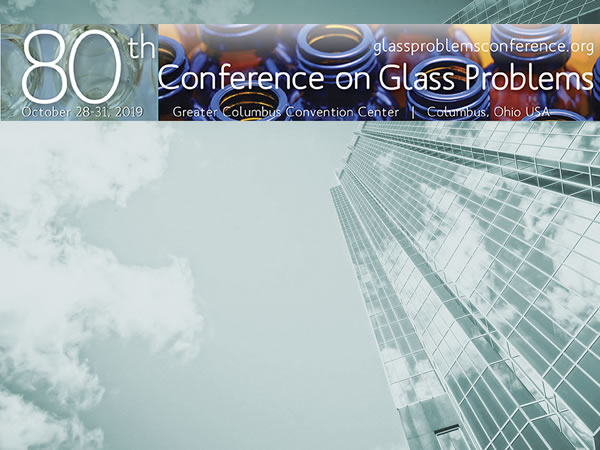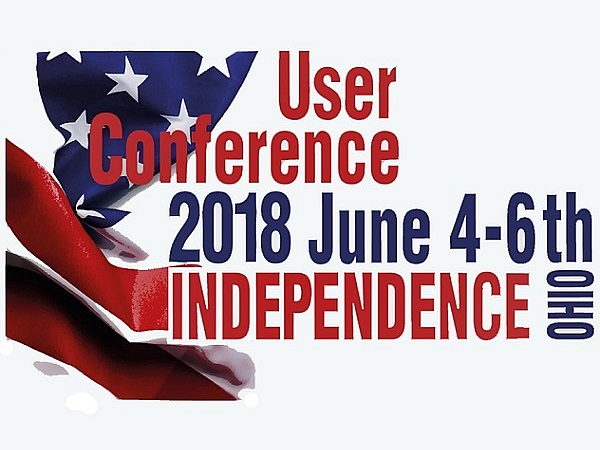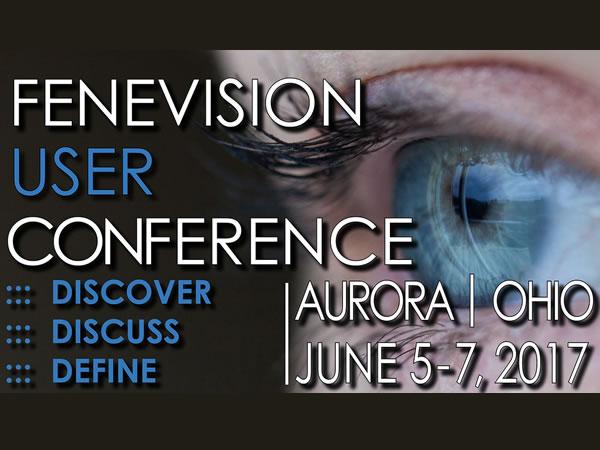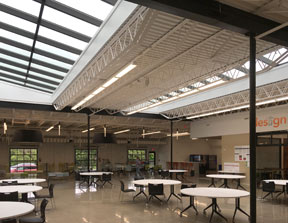Date: 13 October 2010
Attendees from around the world will meet for two days and discuss the latest innovations and solutions to manufacturing issues and the future of the glass industry.
The Conference on Glass Problems is proudly sponsored by the Department of Materials Science and Engineering at The Ohio State University.
The Ohio State University, sponsor and host of the annual Conference on Glass Problems, has revealed the preliminary programme for its 71st edition, which takes place on 19th - 20th October 2010. The two-day programme is as follows:
71st Conference on Glass Problems
Sponsored by the Department of Materials Science and Engineering
The Ohio State University
Director: Charles H. Drummond, III
Program Advisory Committee:
Ruud G. C. Beerkens – TNO
Warren Curtis – PPG Industries
Tom Dankert – O-I
Martin H. Goller – Corning
Larry McCloskey – Toledo Engineering
Jack Miles-H. C. Starck
Glenn Neff – Glass Service
Elmer Sperry – Libbey Glass
Phillip J. Tucker-Johns Manville
Carsten Weinhold – Schott
Matthew Wheeler-RHI Monofrax
Dan Wishnick – Siemens
Tuesday, October 19th
8:00 am Tabletop Exhibits
9:00 am Welcome
Gregory N. Washington
Interim Dean, College of Engineering, The Ohio State University§
Yogeshwar Sahai
Vice Chair, Department of Materials Science and Engineering, The Ohio State University
Glass Melting
Session Chairs: Ruud Beerkens, TNO Glass Technology Glass Group, Eindhoven, The Netherlands, Tom Dankert, O-I, Perrysburg OH and Larry McCloskey, Toledo Engineering, Toledo OH
1 Recent Developments of Batch and Cullet Preheating in Europe - Practical Experiences and Implications
Philipp Zippe and Wolfgang Kloss, ZIPPE Industrieanlagen, Wertheim, Germany
2 Oxy-Fuel Conversion Reduces Fuel Consumption in Fiberglass Melting
John Rossi, Fiberglass Industries, Amsterdam NY, Michael Habel, Kevin Lievre, Xiaoyi He and Matt Watson, Air Products and Chemicals, Allentown PA
10:00 - 10:30 am Coffee Break and Tabletop Exhibits
3 Solar Glass Melting
Matthias Lindig, Nikolaus Sorg, Lohr am Main, Germany
4 Modeling the Impact of Basin Wall Wear on Furnace Performance
Erik Muijsenberg, Glass Service, Maastricht, The Netherlands
5 Integrated Air Quality Control for Float Glass Furnaces
Michael Cheng, Guardian Industries, Kingsburg CA and Nathan Blanton, GEA Bischoff, Memphis TN
12:00 noon Luncheon & Tabletop Exhibits
Fawcett Center for Tomorrow, Banquet Rooms
12:30 (during lunch) Breaking the Heat Recovery Paradox
Peter Garforth
Abstract: Waste heat is an undervalued resource in the glass industry, using valuable fuels, costing money and causing greenhouse gas emissions. Low energy costs have encouraged the industry to accept these losses. However, times are changing and waste heat is increasingly seen as an opportunity, triggering useful low cost actions, such as replacing hot water boilers with recovered heat, pre-heating batch and gas, space heating buildings and various drying applications.
Heat that can be used in these cost effective ways is a tiny fraction of the waste heat, increasingly triggering studies to eliminate or use this excess heat. The only really successful approach to eliminating waste heat is to redesign the process itself, usually technically difficult and rarely cost effective. Occasionally there will be process breakthroughs, but in reality, these are rare, with low energy prices rarely creating the urgency to invest in research.
The obvious alternative is to find uses for the balance of the waste heat, typically as cooling or electricity. Economics normally kill these projects. This is the paradox. Vast amounts of valuable fuel are wasted as heat. Cost effective uses in a typical plant are a small percentage of the waste. Capturing and using the balance on site is not cost effective at today's energy prices. Are we condemned to view this excess waste a cost of doing business for the foreseeable future, or could there be another way to look at this unused resource, especially when major capacity expansions or new plants are built?
The presentation will explore the strategic options open to the glass industry, when a new plant or a major expansion is in the works, by teaming with the local community. To retain local employment, communities frequently give generous tax and other incentives. Communities also have growing energy and climate change challenges. By rethinking the energy costs and risks for both the glass plant and the surrounding community there may be creative ways to create significant energy breakthroughs and benefits for both players. Capturing these will require new relationships and new approaches to incentives Instead of the glass plant accepting the heat waste as inevitable, with some creativity the technical, economic and social relationship between the plant and the community can be redefined.
1:30 pm Glass Science, Defects and Safety
Session Chairs: Philip Tucker, Johns Manville, Denver CO, Elmer Sperry, Libbey Glass, Toledo OH and Martin H. Goller, Corning, Corning NY
6 Heavy Metal Issues In and Out of Glass
Phil Ross, Glass Industry Consulting, Laguna Niguel CA
7 A Look at the Chemical Strengthening Process: Alkali Alumino Silicate Glass vs. Soda-Lime Glass
Sinue Gomez, Corning, Corning NY
8 Studying Bubble Glass Defects Caused by Refractories
Jiri Ullrich, Glass Service, Vsetin, Czech Republic
9 The Approach to Analysis of Cords and Inclusions in Glass
Henry Dimmick, AGR, Butler Pennsylvania
10 Cat Scratch Cord Dispersal
L. J. R. Gaskell, Parkinson-Spencer Refractories, Halifax, United Kingdom
11 Innovative Oxide Dispersion Strengthened Materials for the Glass Industry
Stefan Mueller, Platinum Engineered Materials, Hanau-Wolfgang, Germany
12 Tools Used to Improve Operational Safety in Johns Manville Glass Plants
Noel Camp, Johns Manville, Denver CO
4:00 - 5:30 pm Tabletop Exhibits
Wednesday, October 20th
8:00 am Refractories and Recycling
Session Chairs: Matthew Wheeler, RHI Monofrax, Batavia OH, Jack Miles, H. C. Starck, Coldwater MI and Carsten Weinhold, Schott, Dyrea PA
13 Extra Clear Glass Refractory Selection: A Follow-up
L. Massard and M. Gaubil, Saint-Gobain CREE, Cavaillon, France
14 Refractory Issues and Glass Processing and Preventative Solutions
Paul Myers, CERAM, Stoke-on-Trent, United Kingdom
15 Fuel Savings with High Emissivity Coatings
Tom Kleeb, North American Refractories, Moon Township PA and Bill Fausey, Owens Corning, Granville OH
16 Regenerator Temperature Modeling for Proper Refractory Selection
Elias Carrillo, RHI Refmex, Ramos Arizpe, Mexico and Mathew Wheeler, RHI-Monofrax, Batavia OH
10:00 - 10:30 am Coffee Break and Tabletop Exhibits
17 Thinking Green: Recycling in the Refractory Industry
Werner Odreitz, RHI AG, Wein, Austria and Matthew Wheeler, RHI-Monofrax, Batavia OH
18 Recycling of Post-Consumer Glass: Energy Savings, CO2 Emission Reduction, Effects on Glass Quality and Glass Melting
Ruud Beerkens, TNO Glass Group, Eindhoven, NL, Goos Kers, O-I Europe, Leerdam, NL and Engelbert van Santen, Consultant, Leerdam, NL
19 Characterization and Improvement of Gob Delivery Systems
Braden McDermott, Xu Ding and Jonathan Simon, Emhart Glass Research Center, Windsor CT
12:00 noon Luncheon & Tabletop Exhibits
Fawcett Center for Tomorrow, Banquet Rooms
1:30 pm Controls and Raw Materials
Session Chairs: Warren F. Curtis, PPG Industries, Pittsburgh PA, Dan Wishnick, Siemens, Spring House PA and Glenn Neff, Glass Service, Stuart FL
20 Model Based Process Control for Glass Furnace Operation
Piet van Santen, Leo Huisman and Sander van Deelen, TNO Glass Group, Eindhoven, The Netherlands
21 Taking Full Benefit of Oxygen Sensors and Automatic Control
Peter Hemmann, STG, Cottbus, Germany
22 Overview of Lime-Based Products/Raw Materials for Glass Manufacturing
Matthias Rohmann and Arndt Pickbrenner, Rheinkalk, W̹lfrath, Germany and Christopher Pust and Marc Pelletier, Lhoist Recherche, Nivelles, Belgium
23 Batch Wetting Revisited
Doug Davies, Toledo Engineering, Toledo OH
24 A Historical Perspective on Silica and the Glass Industry in the USA
Paul F. Guttmann, U.S. Silica, Berkeley Springs WV
25 Low-Iron Batch Processing
Rainer Hauk, EME Maschinenfabrik Clasen, Erkelenz, Germany





Add new comment